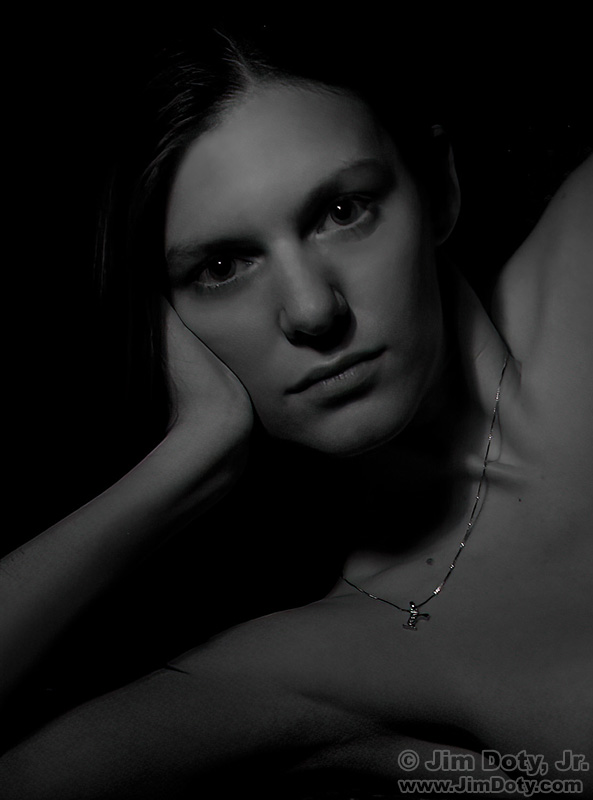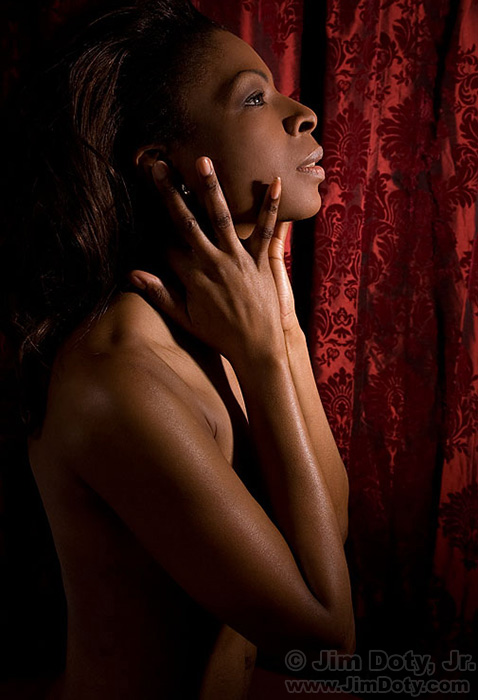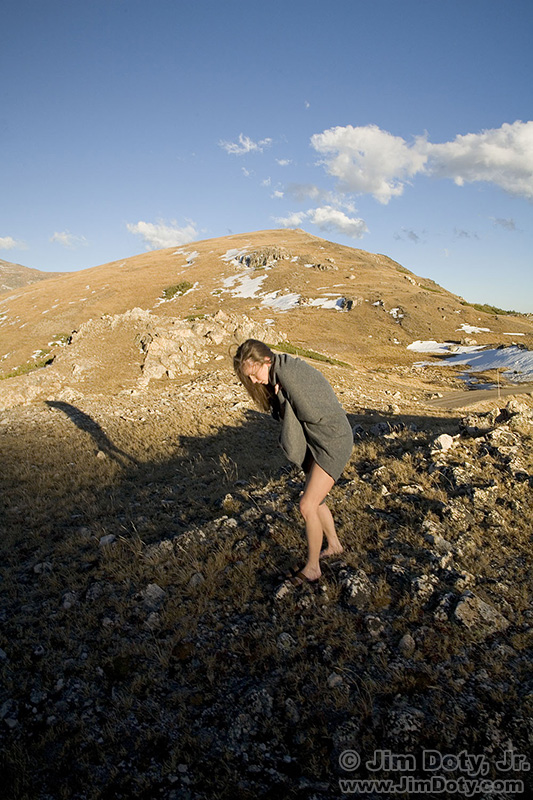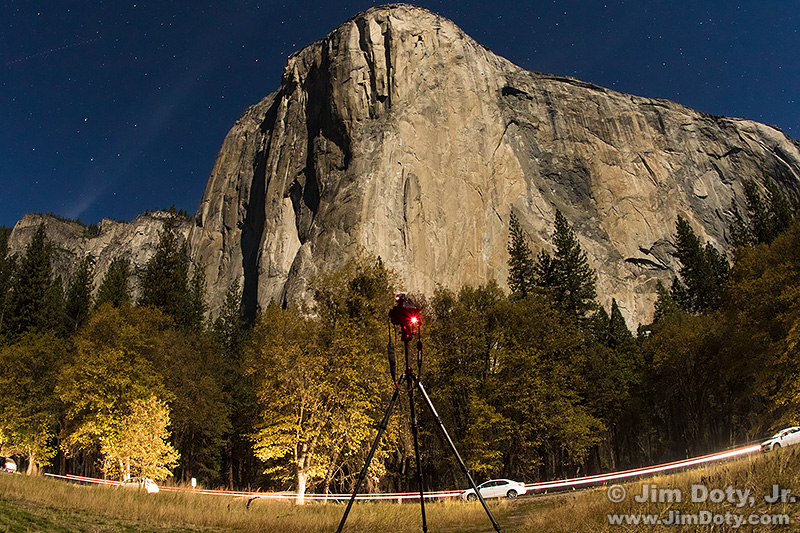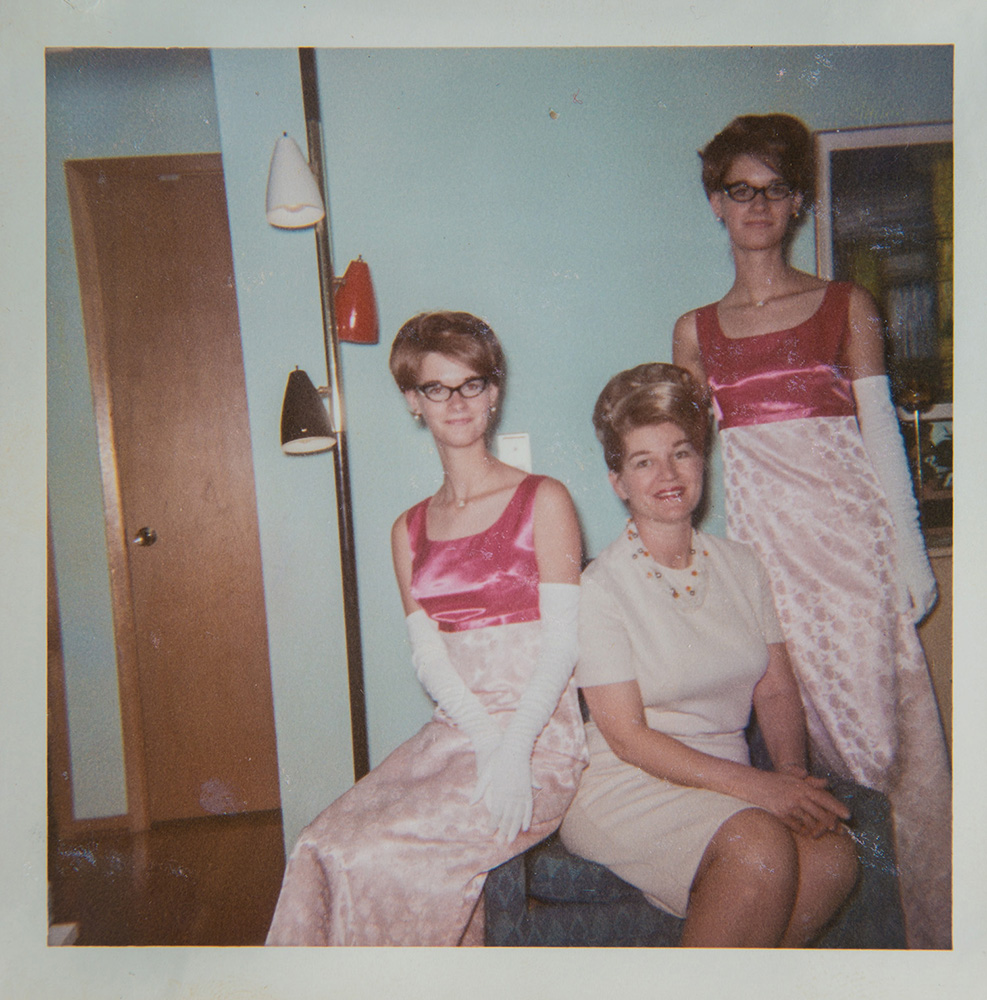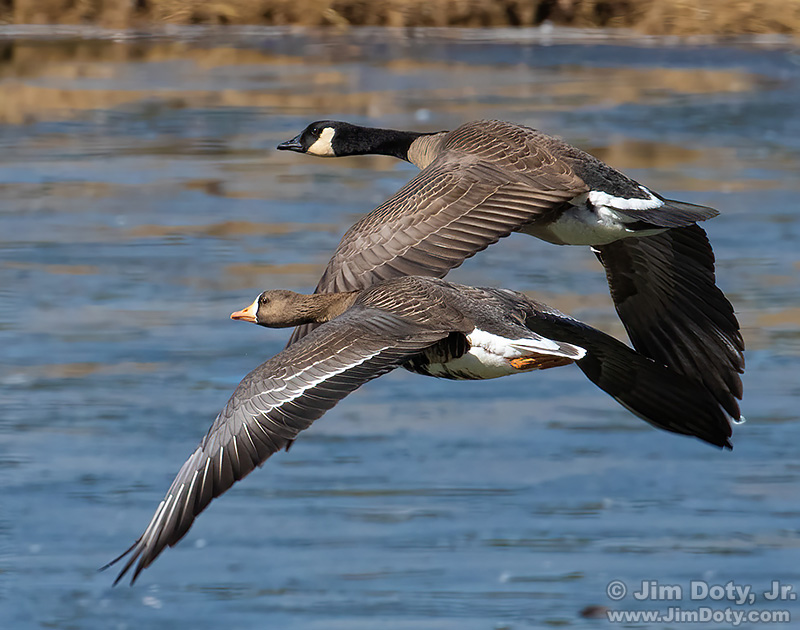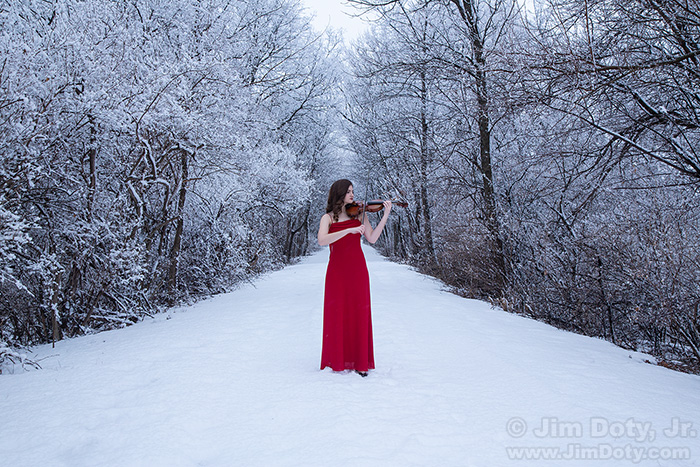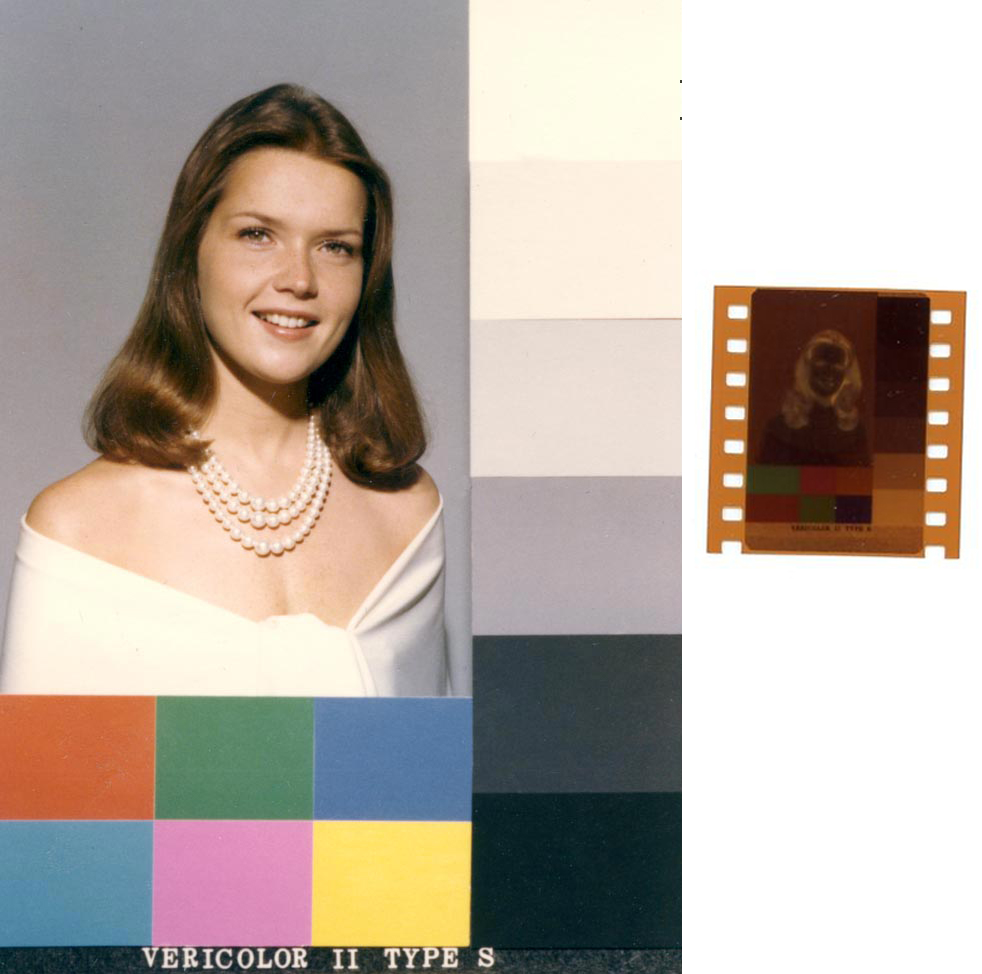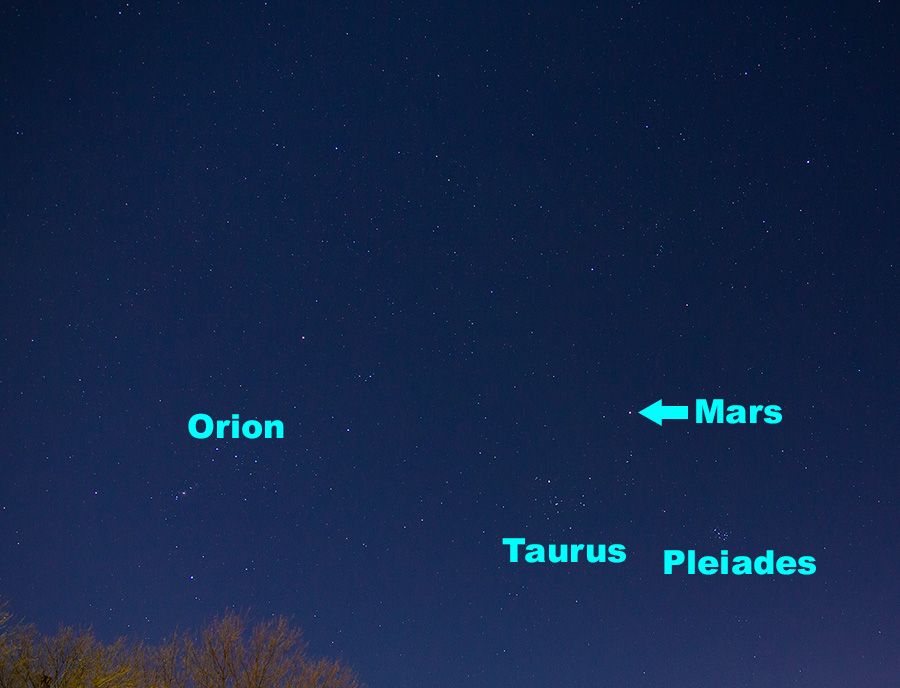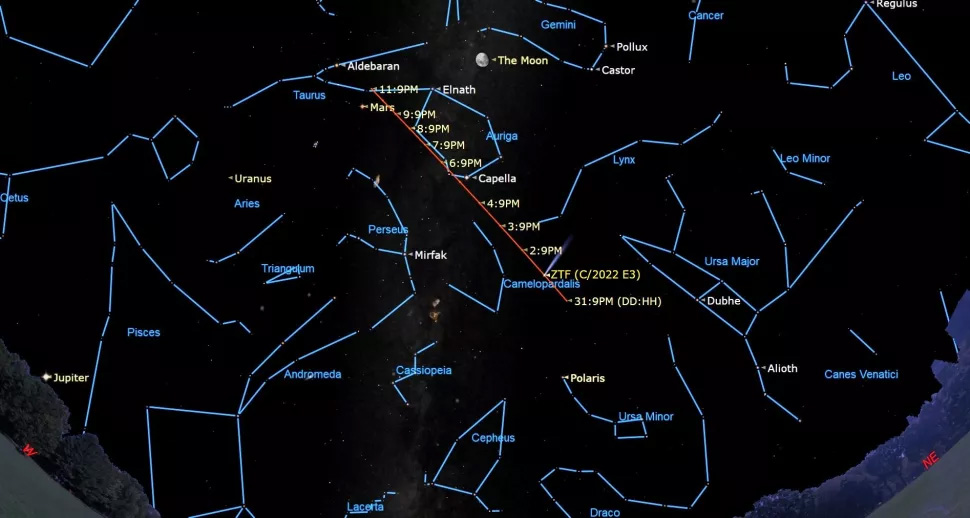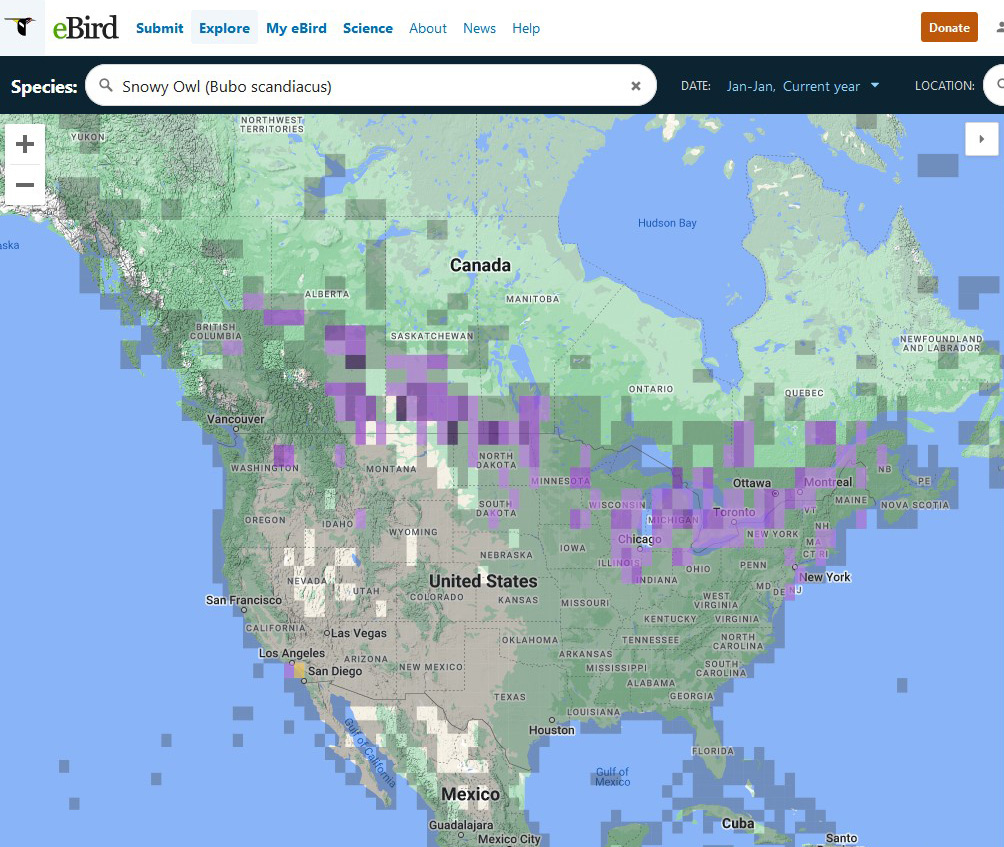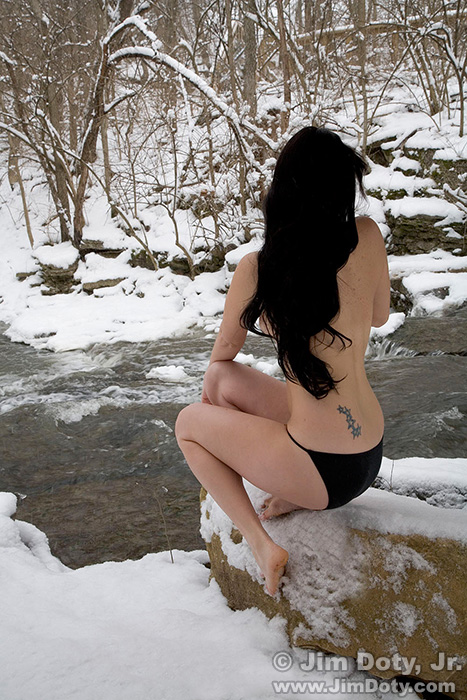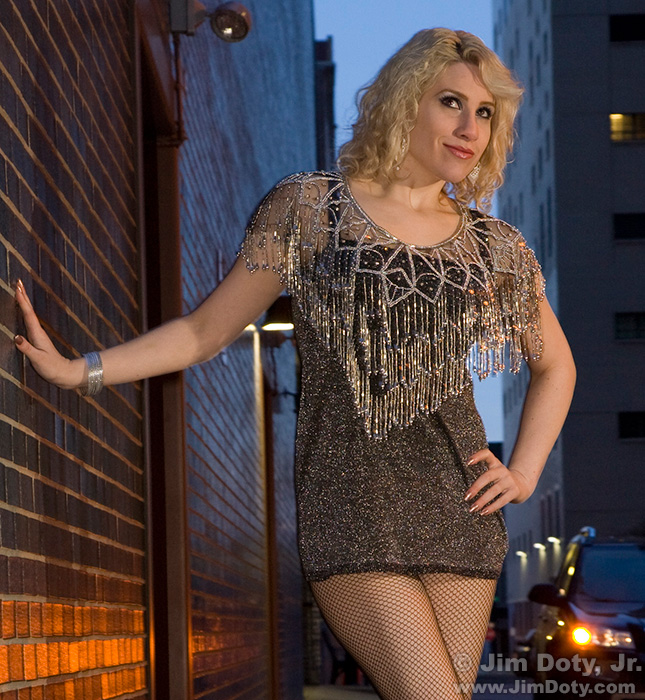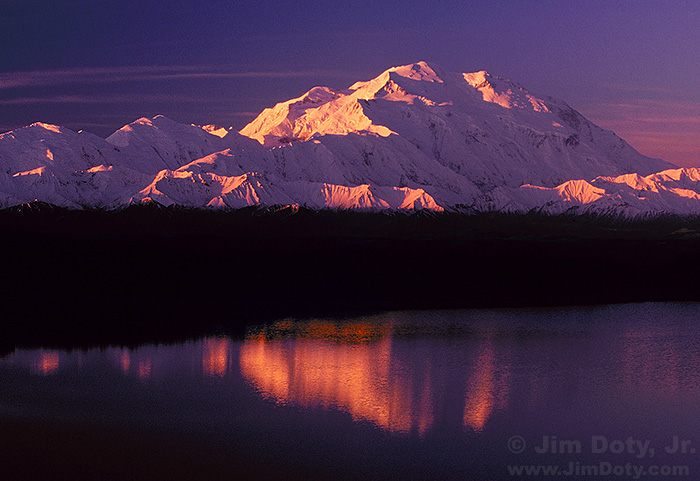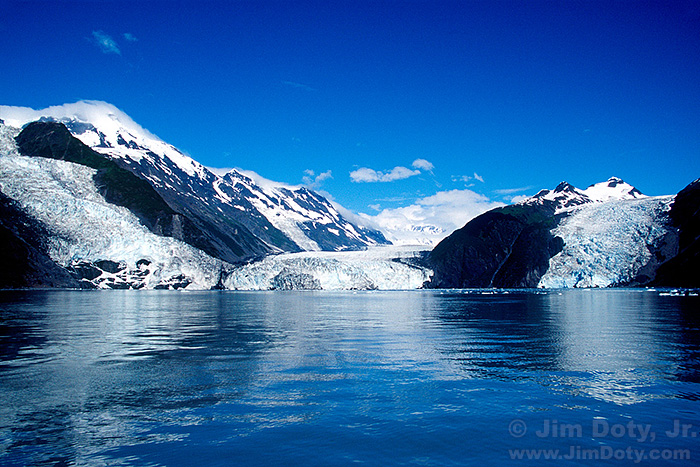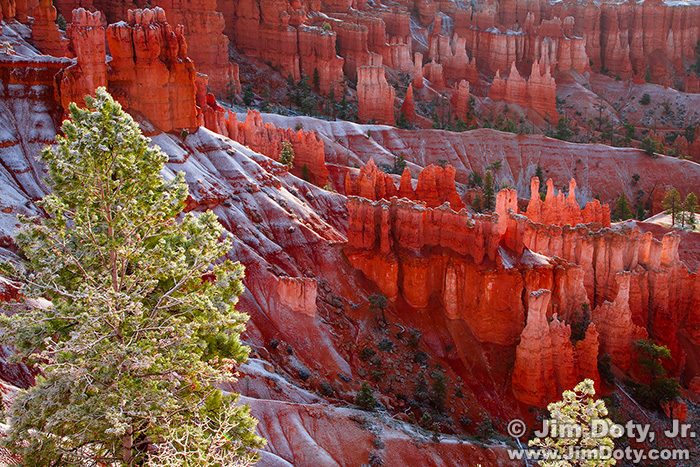Painting with light is an interesting technique that gives you a different kind of look from using a flash unit or ambient light. As with other kinds of light you can make your subject as light or dark as you want. For these images I went with a darker, low key look. Inanimate objects are the usual subjects for painting with light because they do not move during the long exposures, but I wanted to try it with a live human being so I asked a friend to be my subject.
How to Photograph Jupiter, Saturn, and Their Moons
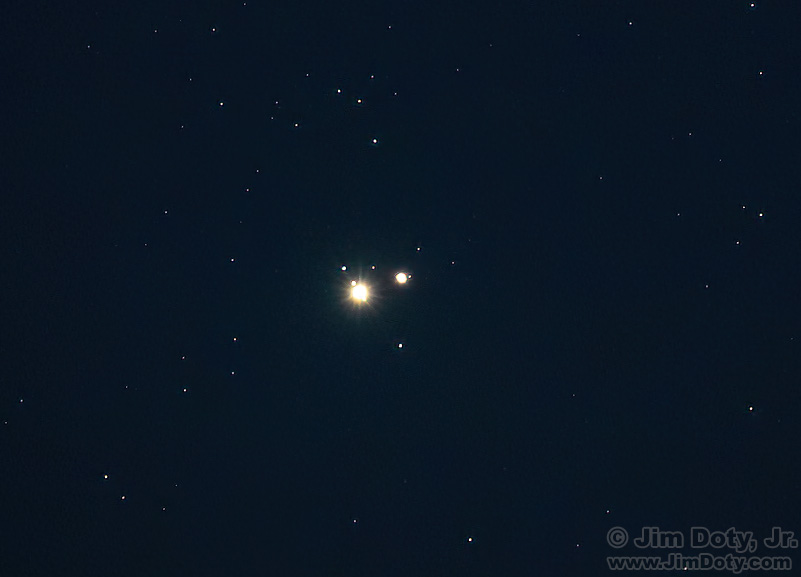
With a tripod mounted camera and a 300-400mm telephoto lens, it is possible to photograph Jupiter and its four Galilean moons (they are named for Galileo), and Saturn and its biggest moon, Titan. I captured them during their Great Conjunction a little over two years ago. Jupiter is on the left with three of its Galilean moons. Saturn is on the right and Titan is just to the right of Saturn.
POTD: Sabrina
This Picture of the Day was created with a simple one light set up. The studio flash was directly in front of Sabrina’s face to camera right. I usually have my main light above the subject’s face and bounced out of an umbrella which creates a more appealing image, but there are times the rules need to be broken. For this image it worked best for the direct light of the flash (no umbrella) to be level with her face.
Keeping Track of Photo Locations with a Handheld GPS Unit
A chance look today at an old photo just sent me back in time, both photographically and technologically. It was bone chillingly cold and Sarah and I were doing figure studies high in the Colorado Rockies. (One of our images is at the end of this article.) Back in 2007 most cameras did not have built in GPS units and my primitive mobile phone did not have GPS capabilities either. But I still wanted to keep track of some important photo locations, and this spot was one of them.
Does Topaz Gigapixel AI Work?

I have acquired some small, old family prints that I would generally describe as “fuzzy”. They are not clean and sharp. Making small fuzzy photos bigger does not make them better, it makes them worse. As I was explaining to an inexperienced photographer, making a high resolution copy of a blurry photo does not make it better. It just means you can turn a small blurry photo into a much bigger and therefore much blurrier photo.
The Super Conjunction of Jupiter and Venus
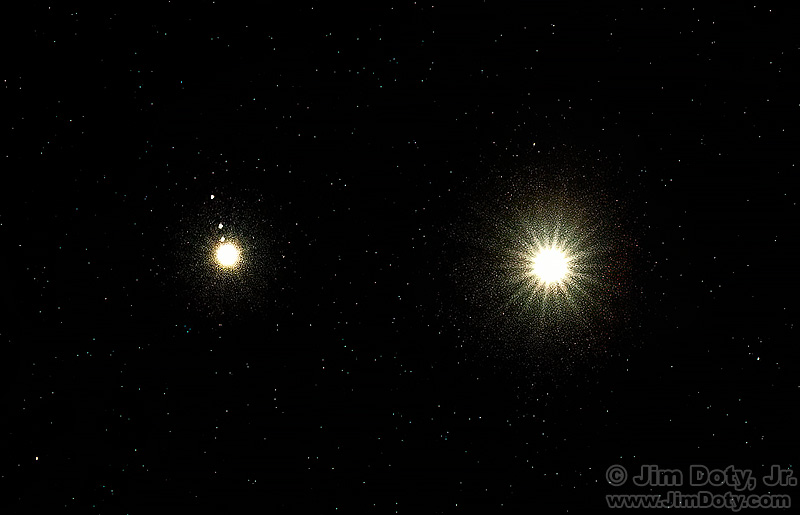
The super conjunction of Jupiter and Venus, March 1, 2023 at 7:24 pm. Venus and Jupiter pass each other on a regular basis so conjunctions aren’t rare. But this time they passed unusually close to each other, making it a Super Conjunction. They were 1/2 degree apart. They won’t be this close to each other again until February 2032. I had a telescope set up for my grandsons and they were thrilled to see three of Jupiter’s four “Galilean Moons” (named for Galileo who spotted them through his telescope). The Galilean Moons from top to bottom in this photo are Callisto, Ganymede, and Io. (Europa was not visible.)
The Metadata in Your Digital Photos
Twins
Sometimes You Get Lucky
I was at one of my favorite local lakes and hundred of geese had shown up. Some of them were in the process of leaving the lake. By the end of the afternoon all but a few geese had left the lake. Some left a few at a time and others left in larger groups.
Elk in a Snowstorm

Today is an anniversary of sorts. February 24, 15 years ago, was a great day in Rocky Mountain National Park. The snow was falling when I found this small cluster of elk in Horseshoe Park. It is one of my favorite photos for the day.
Sami Lynn, A Valentine Portrait

It was a week and a half after Valentine’s Day and most of the dozen Valentine’s Day roses in a vase on the dining room table were done and had been thrown away, but a few were still looking good. I asked Sami to lay on the floor, handed her a long stemmed rose, and I carefully arranged her hair. Then I stood up and pulled the best looking petals off of more roses and randomly dropped them on her. Some didn’t land quite right so I re-positioned a couple of them.
Happy Birthday, Ansel Adams!

Ansel Adams in front of “Monolith: The Face of Half Dome, 1927”. Photographed in his home Dec. 2, 1980.
Ansel Adams was born 121 years ago today, February 20, 1902. He is “the” icon of American landscape photography. Trained as a concert pianist, his love of photography and time spent in Yosemite National Park led him to a career change.
Today’s “Screen Saver Surprise” is a Special Image

After a morning office break, I walked back in to our office and this image greeted me on the computer monitor. This happens to be a really special image for me. As an anniversary gift back in September 1993, my wife signed me up for a black and white printing class at the Kalamazoo Institute of Arts. The gift was initially – let me say – “puzzling” to me. I was pretty much a 100% color slide film photographer. The only time I ever put color negative film in my cameras was to photograph weddings. But it was a gift, so I went.
Violinist in the Snow
It was three years ago today, but it started two months earlier in December with a plan to do portraits of Beth with her violin. Back then she was the principal violinist and concertmaster of the Graceland University Orchestra. (Today she is doing graduate studies in violin performance.) When I asked her to send me examples of the kind of portraits she liked, some of the photos she sent me had a violinist outside in the snow. I asked her if she wanted to shoot in the snow and she said yes. So we waited for snow and on a cold, snowy day in January we did portraits in the snow.
The Photographer’s Bookshelf
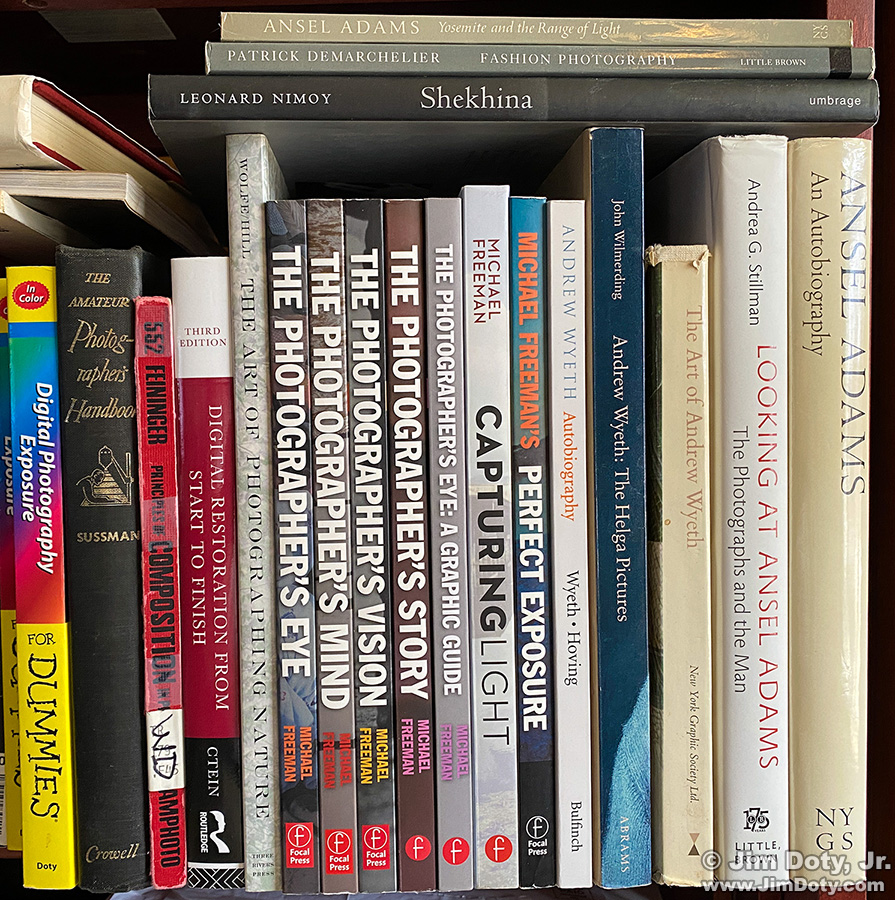
Michael Freeman’s Capturing Light is new to this bookshelf. It is a Christmas gift from one of my children. If you aren’t acquainted with Freeman, and you love photography, it is time you meet. So I took a picture and decided to write about the books in this photograph. You are looking at one half of one shelf of two bookcases filled with photography books. I learned long ago that great photographers read a lot. Photo books, composition books, lighting books, art books, location guides, and a whole lot more. So I read books too.
Shirley Cards: Why they are important and how they are used.
In the early 1950s almost all color negative film sold in the U.S. was made by Kodak and Kodak had the monopoly on processing. When you bought the film the cost of processing was bundled in with the price of the film. When you finished the roll you sent it off to Kodak to be processed and Kodak sent you your prints. As long as you knew what you were doing (and didn’t do something dumb like shoot daylight film under tungsten lights) you got great looking prints back from Kodak. The exception was the rare person who processed their negatives at home and made their own prints. They did not like being forced to pay for processing they didn’t use.
How to Photograph a Musician in the Cold and Snow
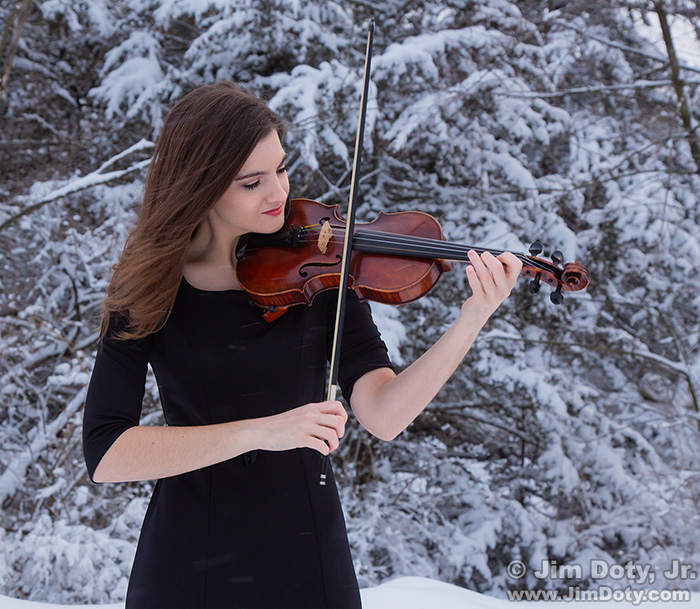
It was my happy privilege to do winter portraits of Beth Presler who is a superb violinist. This article has suggestions for photographing any musician on a cold, snowy winter day.
Find and Photograph Comet ZTF Tonight (February 10)
Tonight is a good night to find Comet ZTF because it will be near an obvious bright object in the sky. I created this image of the sky February 6 around 11:30 pm looking generally west. This photo is your guide to find Comet ZTF. Tomorrow night (Feb 11) works too).
“Raindrops Keep Fallin’ On My Head”
“Raindrop Keep Fallin’ On My Head”
Written by Burt Bacharach and Hal David for the movie Butch Cassidy and the Sundance Kid. Sung by B.J. Thomas. RIP Burt. Thanks for so many memorable songs.
More Help Finding and Photographing Comet ZTF (C/2022 E3)
I have had such good lunch photographing prior comets I was eagerly looking forward to seeing and photographing Comet ZTF (C/2022 E3). This comet is such a big draw because it has not passed earth in 50,000 years and will not likely return again. When I finally had a relatively clear night February 1, I was outside and ready to go. I had a much harder time than I expected. I glassed the right area of the sky with binoculars and I could not find anything that looked like a comet. So I took pictures of the northern sky which you can see above. On the back of my camera I could not the comet. So I downloaded the memory can looked on my computer monitor.
How To Photograph Comet ZTF (C/2022 E3)
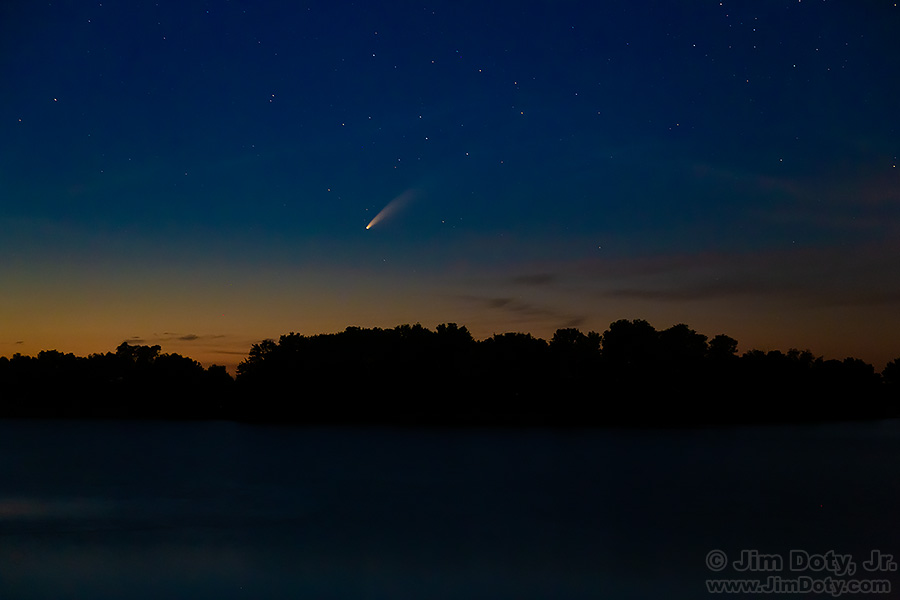
The key to photographing Comet ZTF is to know where to look. In the evening around 9 pm it is above the North Star and a little to the left. It moves higher in the sky every night and is almost straight overhead by February 5. For details and the best evening sky map I could find, read this article. Once you have found the comet with your naked eyes or with binoculars, you can photograph it.
How To Find and See Comet ZTF (C/2022 E3)
This map will show you where Comet ZTF (C/2022 E3) will be every night at 9 pm local time from tonight through February 11. 9 pm is approximate (the map might look like this before or after 9 pm), and the difference depends on how far east or west you are located in your time zone.
How to Find and Photograph Snowy Owls
Winter is your opportunity to photograph Snowy Owls. When it is cold enough and there is enough snow cover, snowy owls move down into the northern U.S. The colder it is the farther south they move. If conditions are right, don’t delay. If the winter turns warmer the snowy owls will head back north.
Winter Photography Safety Essentials
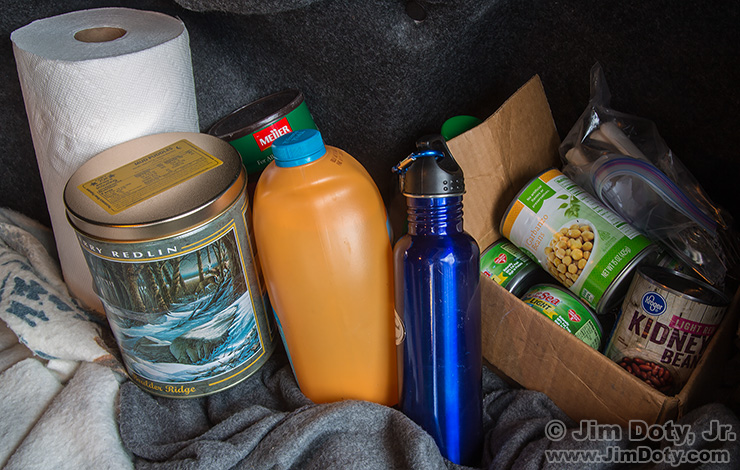
Some of the winter travel items I carry in the trunk of my car. This is the “kitchen” and “furnace”.
I grew up in Colorado where strange weather can strand you in any month of the year. Even though it is rare, I’ve seen blizzards in the Colorado high country in July. So I learned to carry some safety essentials when doing winter photography in remote locations. You never know when you might be stranded for several hours, a whole day, or longer, until the blizzard abates and someone can come find you. This is what I carry in my car when I hit the road in the winter and pretty much any time I am going to be in the High Rockies. I include a few winter travel tips, too.
How to Photograph a Nude Model in the Cold and Snow
It is difficult enough to create a beautiful nude image under normal circumstances, much less in the cold and snow. You need to bring some significant skills and experience to the task. So does your model.
How To Work With A Model (or Anybody Else) When The Windchill is 4°
You would think a windchill of 4° Fahrenheit (-16°C) would be too cold for a photo shoot, but not with some models. We booked this January shoot weeks in advance so we knew it would be cold, but we had no idea how cold until the day arrived. Here’s the story behind this image and how to work with a model (or anybody else) when it is so cold.
The Sunny f16 Rule Isn’t Reliable in Winter
The Sunny f16 rule is really useful on bright sunny days in the spring, summer, and fall, but you can’t rely on it for accurate exposures on bright, snowy winter days. It will often lead you astray and you will have seriously blown out highlights. There are much more accurate ways to meter in the winter.
Testing Your Camera’s Snow Exposure Latitude
The “snow exposure latitude” for every camera is different. You won’t find it in your camera’s manual but it is easy to determine with a do-it-yourself test. Why does it matter? If you don’t know the snow exposure latitude for your camera and how to apply it to your images, the color and quality of your winter photos will suffer.
How to Protect Your Camera Gear in the Cold and Snow
Cold and snow can cause a lot of damage to your camera gear. Something as simple as shooting outside and taking your camera inside your house or car can cause hidden damage that won’t show up until days or weeks later. The simple steps in this article could save you hundreds of dollars in repair bills.
Metering Nighttime Winter Scenes
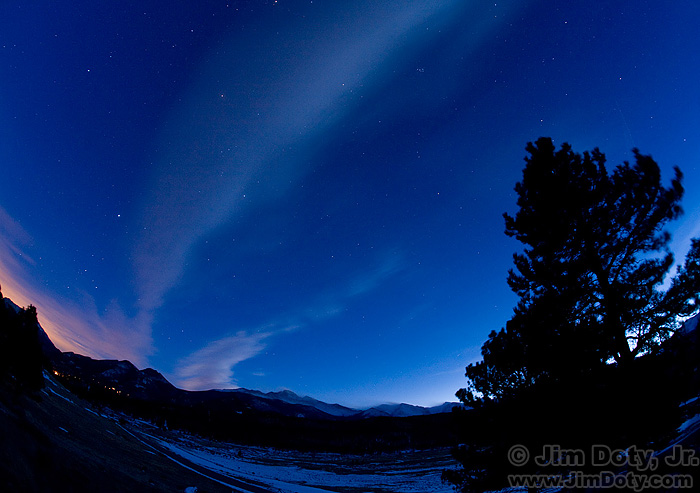
Twilight, Rocky Mountain National Park. Sirius, Canis Major, Orion, Taurus, the Hyades star cluster, and the Pleiades star cluster are all visible in the fading light. Click for a larger version.
You can photograph the night sky year around, but winter brings an added bonus: SNOW! When you don’t have the benefit of moonlight, most of the year land forms a dark to black silhouetted skyline against the night sky. In winter you have the possibility of including the highly reflective snow. You can see both in this photo. Any place not covered with snow is very dark to black. Having reflective snow is why winter is the favorite time of year for a lot of photographers to go out and photograph the night sky.

